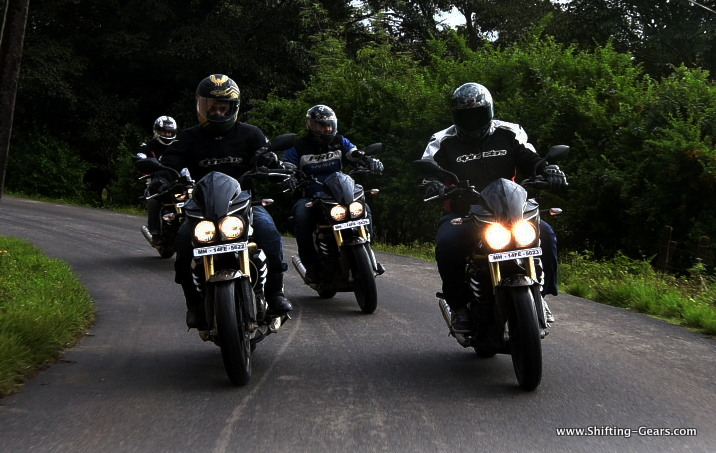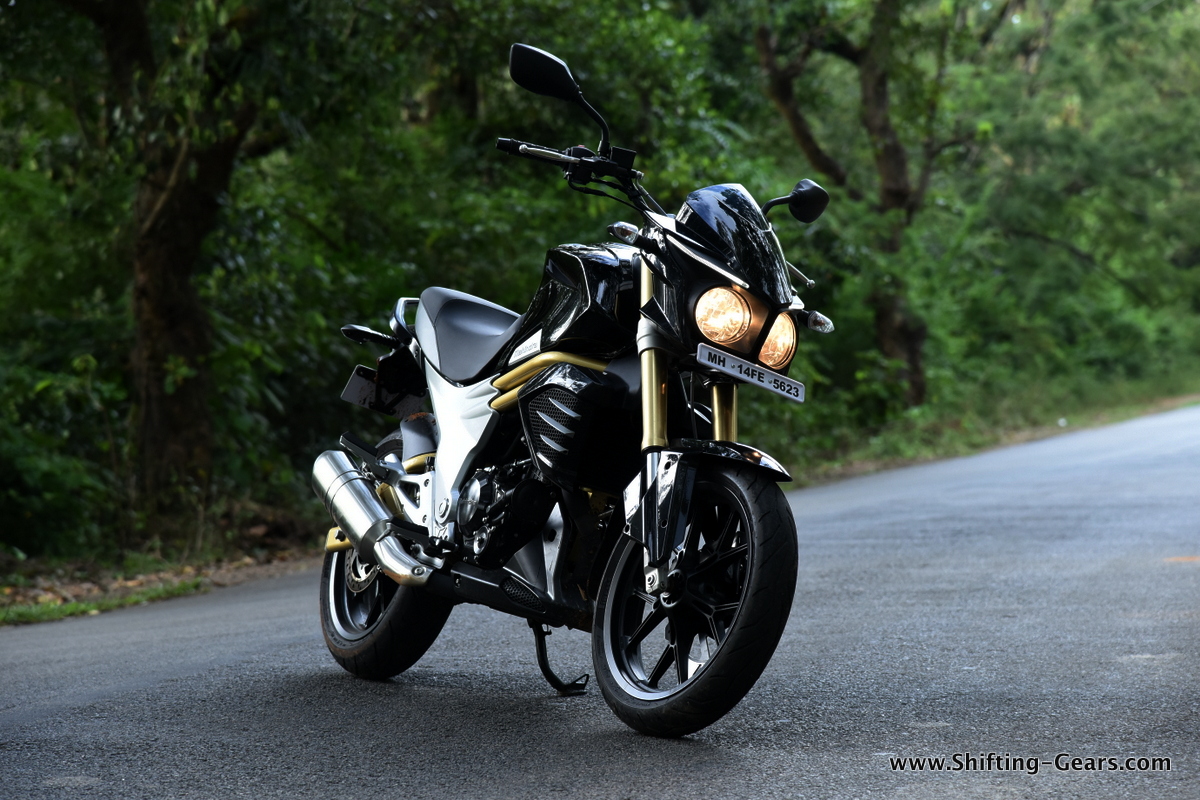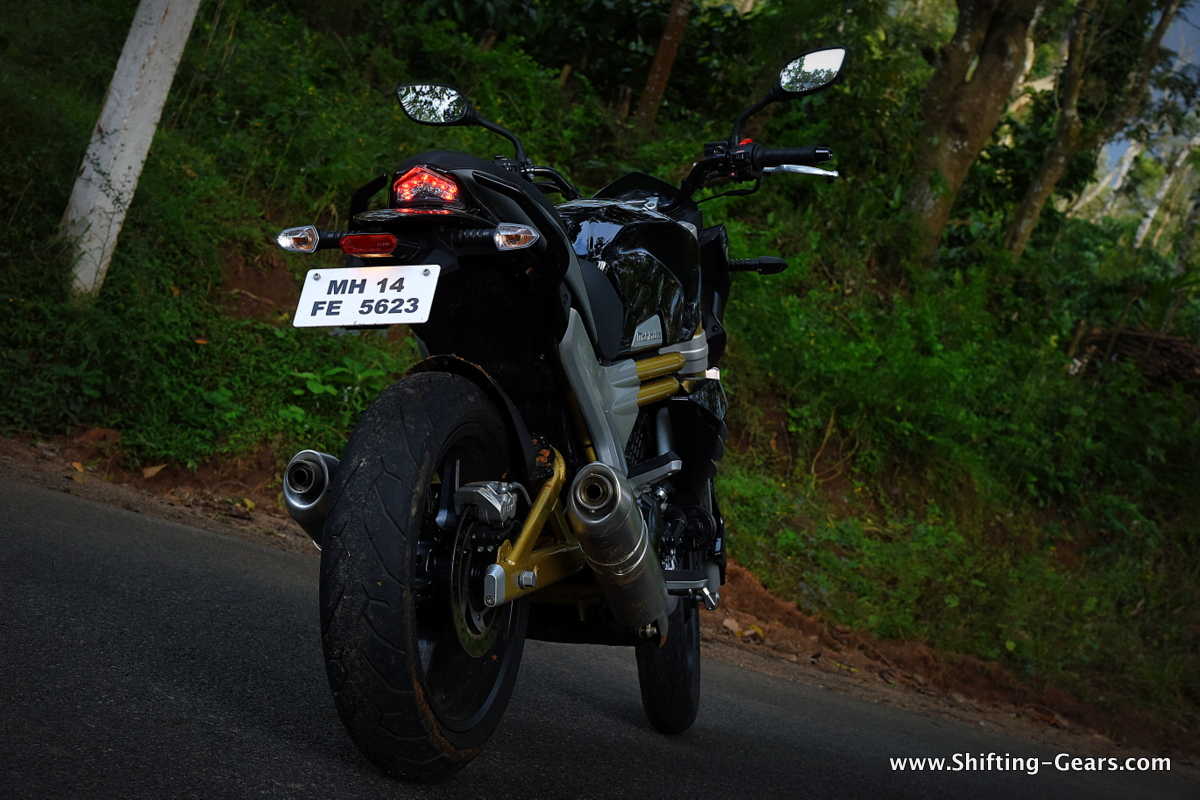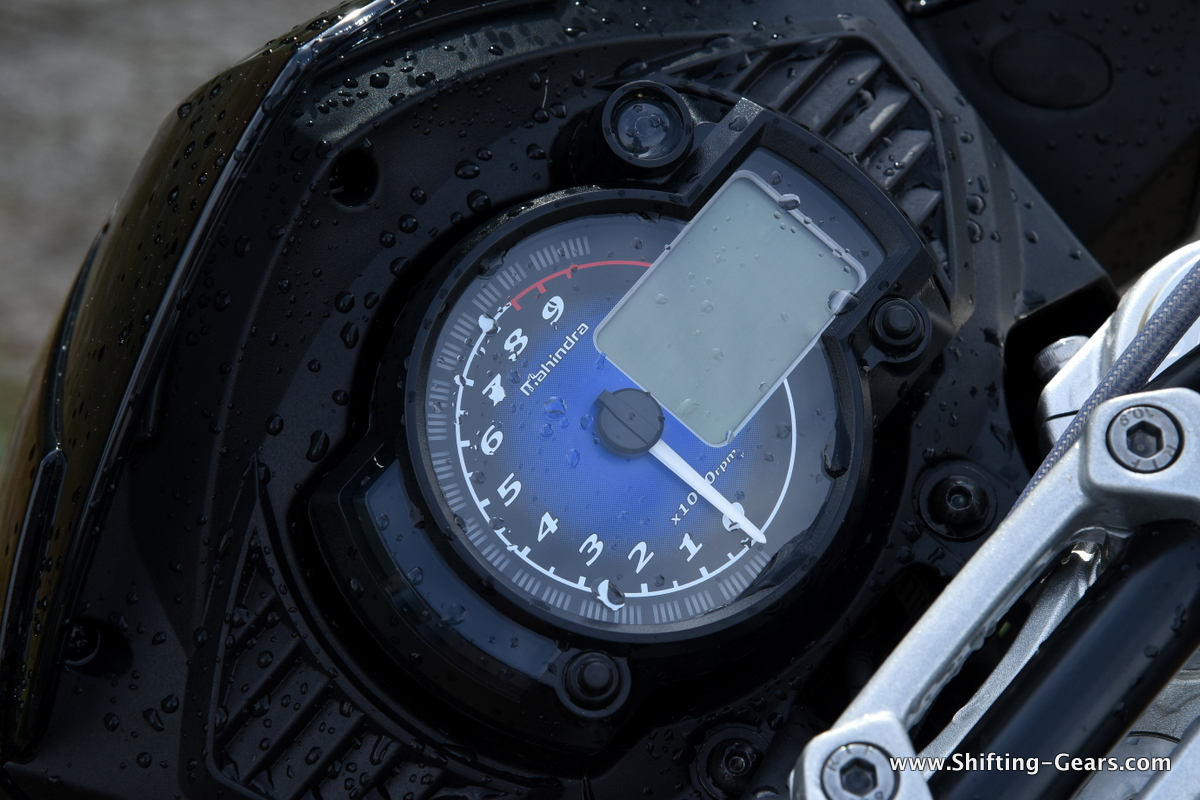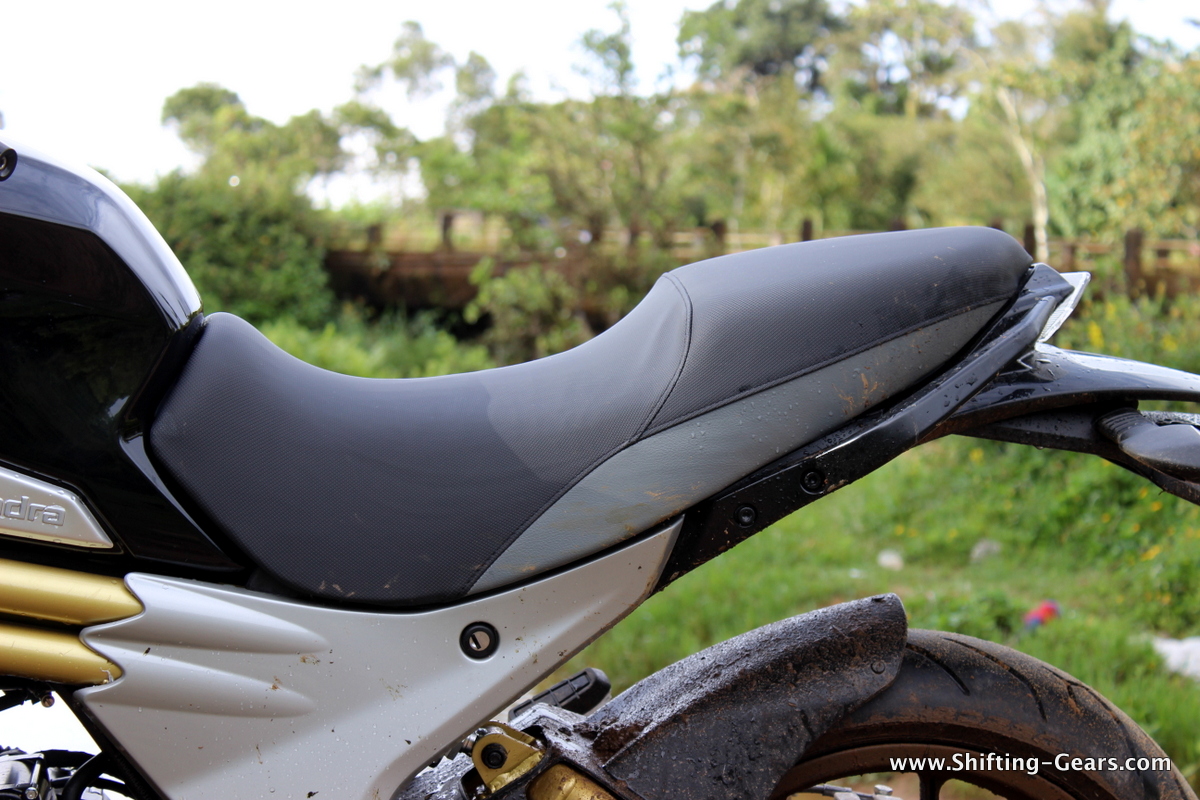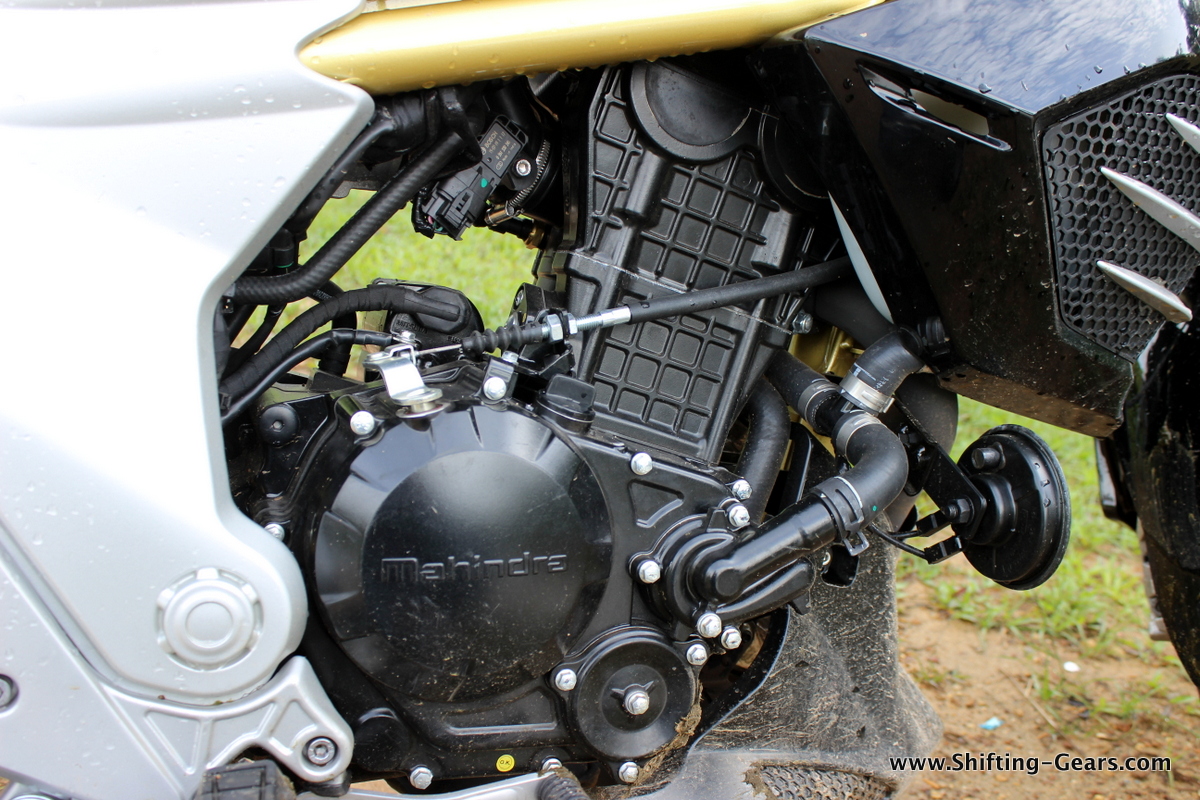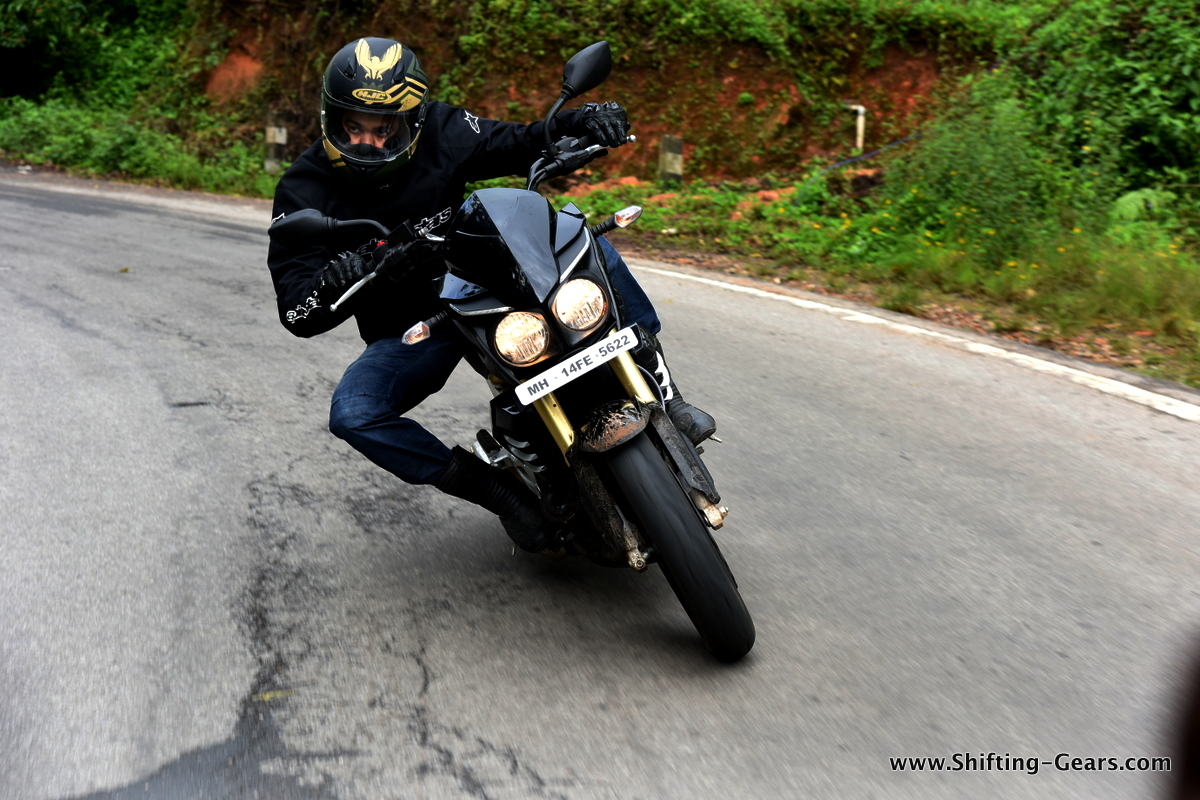It’s a rare case when you come across a product which is finally ready to hit the streets after being developed for half a decade. The minute we say this, almost everyone knows that we’re talking about the Mahindra Mojo. The Mojo was first revealed by Bollywood actor Aamir Khan in 2010. While the project at that time was quite interesting given that Mahindra was a new brand in the two-wheeler space; it took a bit too long to finally get the ball rolling and the excitement fizzed out a good amount. Had Mahindra been able to launch the product within a year or two after the first unveiling, they would have beaten the likes of KTM Duke 390 in entering this segment. Now with every top manufacturer present in the 250cc – 300cc class street motorcycle segment, things have only turned out to be a bit more tough for India’s largest utility car manufacturer. Mahindra has struggled in the two-wheeler space for quite sometime. But recent products such as the Centuro commuter motorcycle & Gusto scooter with their feature list have managed to wow a few customers.
Mahindra has launched the Mojo in India priced at Rs. 1.58 lakh (ex-showroom Delhi). The brand claims that these prices are introductory and all set to increase after Diwali. However, we wish Mahindra kept the pricing as is. They have managed to undercut the Honda CBR250R pricing at the moment and this will surely earn the brand some brownie points. With pricing increasing within a month from the launch, we’re not sure if it will generate confidence in the buyer. At this price, the specs and equipment are just fine. May be better than some top models in this price range.
Mahindra invited us last week to ride the Mojo for over 600 km in Southern India. With so many questions in our head, when we finally hopped on the motorcycle and wringed the throttle, this is what we found out…
Styling:
Well, this has been the most tricky part for Mahindra & the Mojo. Right from day 1 since it was revealed, the Mojo was criticized for the way it looked. Some called it weird, while some called it ugly. Very few actually came out and said it actually looked decent or good to them. Those who’ve done their research on the Mojo already know that the bike looks strikingly similar to the Malaguti MR2. But with half a decade in hand, Mahindra went back to the sketch board and gave the Mojo a design change, to a small extent. When we first saw the bike, it wasn’t really appealing to be honest. But with time, the design grew on us and the bike doesn’t look as bad as the critics online have projected it to be. The overall design of the Mojo is very balanced & now, neutral. Unlike the 1st prototype.
On the front end, the Mojo sports dual round headlamps surrounded by a beefy bikini fairing. These twin-pot headlamps get matte black plastic surrounds while there’s a gloss black panel on the extreme end. On top, you have a dark black wind deflector which covers the speedo console. Between this are two ‘eyebrow’ like LED pilot lamps which looks quite nice at night. Yes, the overall package at the front might look like a pigeon, but it isn’t too bad. It’s just a matter of time till one gets used to this design language. The other striking design highlight on the front is the upside-down suspension which is painted in gold. This adds a nice contrast on the black shade of the Mojo and adds some character. Also, given that these USD units are chunky in size, it shows off well in this gold colour. Below, there’s a black painted mudguard which wraps around the lower end of the suspension which might work as protection from getting scraped in traffic. Very thoughtful! The Mojo also gets a segment best 320mm front petal disc brake with sintered pads. Alloy wheels are black multi-spoke units. We want to reiterate that once you look at the bike on a daily basis, or spot one out on the street or in the showroom; the front design will start becoming less offensive day by day.
When looked at the Mojo from the side, it looks a bit front heavy; AND IT IS. Th bulk of the headlamp & the tank give it more mass towards the front compared to the tail end. What’s highlighted on the side are the gold painted chassis ribs which wrap over the engine. On the red & white body colour, these ribs are seen in black. The fuel tank of the Mojo doesn’t really stand out as the biggest in class, but it is. With a 21L fuel tank capacity, the Mojo is one of the largest fuel carrying tourer motorcycles in the sub 500cc range. On the tank, you get a chunky Mojo emblem in silver. Mahindra likes to add some cheesy elements to every model and on the Mojo, you have a silver ‘Mahindra’ plate on the lower end of the tank, which will be covered by the riders feet when on the move. The floating cowl on the side covering the radiator gets silver coloured fins which help deflect wind. There’s also an aero duct in this floating cowl which deflects wind away from the riders feet. Below, the engine is painted in gloss black with bolts in silver giving it a staggered look. There’s also an engine underbelly painted in black with mesh inserts on either side to cool air on to the engine. Side panel on the Mojo is painted in silver and this breaks the monotony nicely.
Coming to the rear, there’s very little bodywork. The Mojo’s seat is of the step-up type, but not split. Under the pillion section, you can see a ‘grey’ area which is actually the seat cover and not a side panel. On the red & white shade this section is seen in white. Below this, you have grab rails for the pillion rider painted in black. Protruding out at the back from below the LED tail lamp is a gloss black plastic section which houses the number plate and turn indicator. We had doubts about the quality of this section and gave it some hard spanks, and it held up tightly. Even when we were riding through some very, very bumpy patches, this section did not shudder noticeably. So you need not worry about this tail end snapping easily if someone gets too close from behind. Turn indicators on the Mojo get clear lens. On either size, you get an exhaust pipe which is upswept at a nice angle. If you look at the mounting point of this exhaust end can, you can notice that Mahindra has ensured nothing goes wrong with a beefy joint. The swing arm holding the rear tyre is also painted in gold and looks good. What a lot of people would like is that there is no ugly looking saree guard or tyre hugger on the Mojo. This also shows off the Pirelli Diablo Rosso II tyre really well. Rear wheel also houses a disc brake
Overall, although the Mojo is not the best looking motorcycle out there in the market, we would still give it a 7/10. Only for the thoughtful design elements. Out on the streets, the Mojo did manage to grab eyeballs when we passed through some populated areas.
Instrumentation & ergonomics:
The Mahindra Mojo comes with a digital + analogue speedo console. Overall plastic quality around this area is good, but it could have looked a bit more premium. Not that the touch & feel is bad, it just doesn’t look very good.
The instrument cluster of the Mojo packs quite a few features such as dual trip meter, top speed recorder, 0-100 speed test meter, high-rpm indicator, digital fuel gauge, digital clock, LED guided RPM indicator, odometer, digital speed display, etc.
What’s cool is the LED guided RPM indicator. So on the outer end of the dial, you get a red LED illumination which moves along with the RPM needle. When you change the gear, this LED indicator delays and stays in the position to reveal at what revv range you switched gear. Interesting!
Other interesting electronic bits include limp home mode, automatic headlamp controller, self adjustable light beam for dual headlamp, roll over sensor & RPM limit indicator. The lime home mode actually senses a malfunction and limits the engine to 5,000 RPM to avoid further damage. The roll over sensor acknowledges if the bike has fallen beyond 45 degrees and if the rear wheel is up in the air, turns the engine off automatically.
The switch gear & controls are easy to use. The quality of the switch gear plastic is much better than what Honda offers across its model range. Yes, you read it right. The clamp where the handlebar is mounted looks a bit average though and Mahindra should have slapped that plate here instead of the tank. Rear view mirrors offer decent viewing angle.
Sit on the Mojo and the riding position is upright to suit long touring purpose. However, we found the position a bit flawed as we never really felt very comfortable during our 600 km run on the Mojo. The handlebar is high and the seat is scooped low. Also, the footpegs are forward-set. This gives the Mojo a very commuter-like riding position. Slightly rear set footpegs & seat height a little higher would have been perfect. Nevertheless, this seating position is comparatively better than other touring options available in the market. It only lacks sporty feel, that’s it. For the pillion, there’s decent room available. Seat compount is soft and keeps your rear happy over bad patches. This pillion section however isn’t too accommodating considering the Mojo will be used for touring. The design doesn’t really look very luggage friendly.
Engine, performance & handling:
Mojo comes equipped with a 300cc DOHC (Double Over Head Camshaft), low friction piston and rings, advanced EFI (Electronic Fuel
To fire up the Mahindra Mojo, you get an electric starter only, no kick start. Press the button and the Mojo comes to life without any drama. What you will notice and love instantly is the exhaust note. For a single-cylinder motor, the Mojo sounds really good and thrashes the likes of KTMs & Bajajs in the exhaust note department. It makes use of a 1-into-2 exhaust system. Hear it to believe us. Also, at idle, the engine feels reasonably refined. Yes, this is the first high-capacity motor by Mahindra’s two-wheeler division but NVH levels are acceptable. The engine feels refined compared to the KTM as well, with vibrations well in control. There are ample rubber mounts on the Mojo which have ensured that the rider doesn’t feel much of what’s happening between his legs.
Riding within the city thanks to the ample amount of torque is very easy. The Mojo crawls at city speeds easily without heating up too much. Where a KTM motor would get the radiator fan turned on, the Mojo stays quite composed even in traffic. We put the Mojo through some tricky situations from Bangalore to Coorg & back, and were very impressed by the way it handles within the city. The engine has a flat torque curve delivering its peak from 4,500 RPM till 6,700 RPM which makes it easy to maintain gears. We managed to ride in 2nd and 3rd gear at very low speeds where the likes of KTM Duke would start to hesitate. With more than 170mm of ground clearance, the bike tackled broken roads and speed breakers with ease. And throughout, the pleasant exhaust note was a perfect companion. It’s only in the top gear when speeds below 60 kmph seem a bit difficult to the motor and there’s nervousness felt.
Hit the highway, wring the throttle, and the Mojo has decent punch. It is here when it screams out to be a comfortable touring machine and not a fast motorcycle. Yes, it has a 300cc motor but power is delivered in linear fashion and not in a way to surprise riders. The way the engine functions, it will make every rider feel comfortable out on the highway. Those looking for outright punch might be a little disappointed. Don’t account the bike to be slow to the top though. The speedo displayed a top whack of 154 kmph when pushed hard.
We have to mention that the engine is a star! It showed no signs of stress when we ripped it through the ghats in coorg for well over 30 minutes. With the RPM close to the redline for that long, the engine stayed composed and we were pleasantly surprised by this. Even the gearbox was smooth and not even once did the Mojo false shift. For those who love to save that splitsecond, the Mojo supports clutchless upshift & downshift with ease. Not that we recommend it, just a worthy mention.
The Mojo rides on a twin-tube HTR chassis with coaxial mounting & makes use of a upside-down front fork & rear monoshock mounted at 25 degrees. This is a unique setup in the segment and we must mention, that with all this, the Mojo is very stable on high speeds. With 165 kg of dry weight, the Mojo is quite a heavy motorcycle as well. Ride quality on the Mahindra Mojo is super. Even with two up, the bike handles bumpy roads well and stays in place. The front end of the bike with the USD setup is a bit heavy and you feel it while turning in. One needs to know the bike well before starting to push hard into corners. Once used to it, entering fast sweeping corners with the Mojo will be no problem at all. The only negative of the slightly soft suspension is that on high speeds, it takes time to balance out. But it is not a big deal as very few would use the Mojo to get their knees out or down when in the ghats.
What keeps the bike in place are the Pirelli Diablo Rosso II tyres. We’re sure every owner of the Mojo will praise the tyre choice by Mahindra. These Pirelli rubbers grip the road very well, be it dry or wet. We entered corners, made fast downshifts, scraped footpegs, and did everything possible but the tyres did not make us feel nervous even once. For those who love to check their tyres for chicken stripes after a hard ride will love to see the tyre nice and black all the way upto the sidewall.
Braking performance comes from front & rear petal disc brakes. Brakes are sources from JJUAN, a Spanish company. Although it feels a bit wooden, the brakes perform well. Coupled with the Pirelli rubber, the bike did not lock up even once and we got used to the setup very soon. Mahindra has revealed that an ABS version is on the cards mostly within this fiscal year.
To sum it up, the Mahindra Mojo has impressed us to a good extent. With the pricing strategy gone right (at the moment), there is absolutely nothing wrong with the Mojo (except from the debatable styling). With respectable equipment on offer and an engine which is a star, all that the Mojo has to do now is pass the test of time in the reliability department. Getting a motor to work as good as the Japanese units is quite an achievement for Mahindra, and this deserves a mention. Will the Mojo be a commercial success? Well, it is hard to tell. But if the Mojo as a tourer is pitched against the likes of a Royal Enfield Classic 350, the Thumper is a dated white elephant to own. Just forgive the Mojo’s styling a little.
Yes it took half a decade, but Mahindra, you did well…

